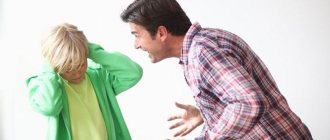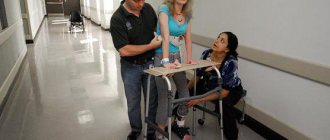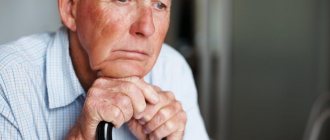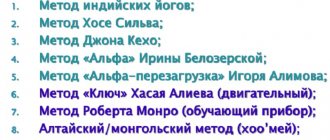Story
Body-oriented psychotherapy was started by Wilhelm Reich, a student of Sigmund Freud, who moved away from psychoanalysis and focused on effects on the body. His work was continued by Ida Rolf (founder of Rolfing), Gerda Boyesen (founder of biodynamics), Frederick Mathias Alexander (Alexander Technique (English) Russian), Franz Alexander (one of the founders of psychosomatic medicine), Marion Rosen (founder of the Rosen method) and Alexander Lowen (one of the founders of bioenergy analysis).
The first method of bodily psychotherapy that has undergone scientific accreditation and received recognition from the European Association of Psychotherapy is Biosynthesis by David Boadella.
In Russia, the Feldenkrais Method is also commonly referred to as body-oriented psychotherapy.
Some methods and techniques have been described in methods such as:
- Continuum concept (English)Russian
- Authentic Movement (English)Russian
- Trager Approach (English)Russian
Reviews
Those who have tried this Reich treatment method as an auxiliary one note that they had a unique chance to get to know themselves and their body better. Sleep usually returns to normal quickly. A person can pay attention to what was previously out of sight and find internal opportunities for relaxation without bad habits. For some, understanding the technique does not come immediately, but with regular practice this still happens.
Doctors also give positive feedback regarding this therapy. During a difficult period, when you have given up drugs and alcohol, your mood is at zero, there are unpleasant physical sensations, mastering relaxation techniques and completely removing blocks will come in handy. Therefore, many psychotherapists use a comprehensive approach to group and individual sessions, including body-oriented therapy techniques.
Theoretical basis
The foundations of the theory of body-oriented psychotherapy were laid by W. Reich. The fundamental postulate that provided the subsequent vector of development of this direction of psychotherapy was the concept of muscular, muscular or characterological armor. Muscular “clamps” or muscular armor, according to W. Reich, are created as a defense against anxiety that arises in a child on the basis of sexual desires and is accompanied by the fear of punishment. And, of course, the main defense against this fear is to suppress it, which temporarily curbs sexual impulses. Subsequently, such ego defenses become constant and automatic, and, as a result, become character traits, a characteristic shell is formed. The characteristic armor is the suppressive defenses organized into a more or less coherent pattern in the ego, but are not neurotic symptoms[1]. W. Reich identified 7 segments of the muscular carapace, which are localized:
- The protective armor in the eye area is expressed in the fact that there is a feeling as if the eyes are looking out from behind a motionless mask. This protective shell holds back fear and tears. Blooming is carried out by opening a person's eyes as wide as possible, for example, as happens with fear. This is done with the aim of mobilizing the eyelids and forehead in a forced emotional expression. In addition, to open this shell, you can perform the following eye movements - rotate 20 times in one direction and then in the other. Moving your eyes diagonally, up and down, also helps.
- The oral segment includes the muscles of the chin, throat and back of the head. The jaw may be too tight or unnaturally relaxed. This segment holds the emotional expression of crying, screaming, anger, biting, sucking, grimacing. The protective shell can be relaxed if a person imitates crying, uttering sounds that mobilize the lips, biting, gagging, and making grimaces.
- This segment includes the deep muscles of the neck and tongue. The protective shell mainly holds out anger, screaming and crying. Direct impact on the muscles deep in the neck is impossible, so screaming, screaming, gagging, etc. are important means of releasing the shell.
- The thoracic segment includes the broad muscles of the chest, muscles of the shoulders, shoulder blades, the entire chest and arms with hands. This segment holds back laughter, anger, sadness, passion. Holding your breath is an important means of suppressing any emotion; it is carried out to a large extent in the chest, due to this the formation of a shell occurs. The shell can be released through breathing work. Breathing exercises are recommended, especially with full exhalation. The arms and hands are used to strike accurately, to tear, choke, hit, to passionately achieve something.
- Diaphragm. This segment includes the diaphragm, solar plexus, various internal organs, and muscles of the lower vertebrae. The protective armor is expressed by the forward arching of the spine, so that when a person lies down, there is a significant gap between the lower back and the couch or floor. Exhalation turns out to be more difficult than inhalation. The shell here holds mainly strong anger. One must dissolve the first four segments to a large extent before moving on to dissolving this one by working with the breath and the gag reflex (simulating gagging), since people with strong blocks in this segment are practically incapable of vomiting.
- The abdominal segment includes the broad abdominal muscles and the back muscles. Tension of the lumbar muscles is associated with the fear of attack. The protective shell on the sides creates a fear of tickling and is associated with the suppression of anger and hostility. The opening of the shell in this segment is relatively easy if the upper segments are already open. You can use breathing, where you alternate between retracting and inflating the abdomen.
- The last segment includes all the muscles of the pelvis and lower extremities. The stronger the protective shell, the more the pelvis is extended back, sticking out from behind. The gluteal muscles are tense and painful. The pelvis is rigid, it is “dead” and bisexual. The pelvic shell serves to suppress excitement, anger, and pleasure. Arousal (anxiety) arises from the suppression of sensations of sexual pleasure and the inability to fully experience pleasure in the area until the anger in the pelvic muscles is discharged. The shell can be released by mobilizing the pelvis and then kicking the legs and slamming the pelvis onto the couch or floor[1].
In his work “Character Analysis,” W. Reich defined character as a structure of stable mental characteristics that manifest themselves in typical modes of behavior in certain life situations. And in his observations, he noticed that dominant character traits often manifest themselves in the physical sphere. They can be expressed in gait, gestures, posture, facial expressions, and so on.
Reich's practical work showed that relieving tension from certain areas of the body allows libido energy to be released (the author called it orgone energy). In accordance with psychoanalytic ideas, of which he was an adherent, this process led to a cure for neurotic and other types of disorders.
Thus, Reich found a physical analogy for mental trauma and illness. He believed that muscle tension—shell-shaped clamps—performs the same function as psychological character traits. In essence, muscle tension hides a certain kind of emotion, and if you release the “clamps” by relaxing areas of chronic tension, then these emotions are released. Following this, if they have been sufficiently splashed out, relief from mental disorders occurs. But also, when suppressed emotional manifestations are removed, the clamps disappear.
Further development of the theory of body-oriented therapy can be found in Reich’s student and follower, Alexander Lowen. His theory is currently the most widespread and used in practice. Lowen also managed to find the theoretical foundations of his concept, which bring together physicality and mental organization into a system.
He changed the term orgone energy to bioenergy, which essentially reflects the same meaning - vital energy. Therefore, the direction he developed acquired the name - bioenergy.
Like Reich, Lowen found characterological features in bodily manifestations. But unlike his mentor, he gave due credit to analytical work. It is safe to say that relieving muscle tension eliminates or alleviates the symptoms of various mental disorders. But at the same time, psychoanalytic work is necessary for complete recovery. They must go in parallel, then fairly stable results can be guaranteed in terms of working with the cause.
Comprehensive observation and analysis allowed A. Lowen to formulate a scientific basis for bodily manifestations associated with certain character traits. At the same time, work with characterological characteristics cannot be considered fundamental in the therapy process. They only indicate what “trauma” lies at the root of the patient’s psychological difficulties. But it is important to take into account character, since it leads the work in the right direction and helps, firstly, to focus attention on the cause, and secondly, to organize the interaction between the patient and the therapist.
Lowen in his works provides a classification of characters [2], which echoes psychoanalytic works and is supplemented by a description of the characteristics of bodily manifestations, as well as the interaction of intrapsychic forces of the individual. Based on these conceptual theoretical studies, the nature of many mental illnesses can be found.
In the practice of body-oriented psychotherapy, various methods are used. This could be a massage or various types of exercises. Their peculiarity lies in the fact that any of them is aimed not only at relaxing tensions, but to a greater extent at body awareness and emotional response. This is what leads to healing. The fact of the need to alternate physical and analytical work also remains undeniable. The bodily work done will be situational in nature if it is not accompanied by awareness and the psychological changes associated with it.
Techniques used
There are several approaches (techniques) that form the basis of body-oriented therapy.
Relaxation
To reduce muscle tension, the patient is asked to relax and tense different muscle groups in turn. After this technique, the muscles become tired and, as a result, become very relaxed. The result is complete relaxation of the body.
Autotraining
Self-hypnosis is great for treating various types of addictions. Even when taking medications, the patient should accompany them with positive phrases regarding their health. This gives an amazing effect. The patient may well be cured by confidence in improving health and quitting drugs (alcohol). The self-hypnosis technique is usually recommended to be performed not only in the doctor’s office, but also at home, and as often as possible.
Meditative psychotechnics
The point of meditation is to completely stop thinking and concentrate only on your own feelings. This is not difficult, as it may seem at first, and meditation can be practiced in any conditions.
Rebirthing
This technique consists of performing a connected breathing technique. This means there is no pause between exhalation and inhalation. The method helps to completely relax, which allows you to experience negative feelings and get rid of them, surrender to joy. Breathing techniques also include holotropic breathing, when hyperventilation of the lungs occurs to remove emotional and bodily blocks.
Treatment with music
Music has been proven to have a positive effect on people suffering from addiction. Such a session implies that a person devotes time to hearing and other physical sensations. The result is a calming effect and relaxation.
Internal experiences - external manifestations
Are there any external signs of a shell? Based on what habits, features, and characteristics can we conclude that there is a chronic tension in one or another of the seven zones noted? Reich advised clients to analyze their own actions, mannerisms, and characteristic postures in order to understand in which area tension is most often concentrated, and therefore identify the experience associated with this area.
For example, a permanently motionless, “empty” gaze or, conversely, shifting eyes makes one aware of the eye shell; clenched or unnaturally relaxed jaws, the habit of chewing, sucking or gnawing on objects can be a signal of clamping in the oral segment. Coughing (not as a symptom of a cold), frequent swallowing, and an uncertain, quiet voice probably indicate a throat shell.
Problems in the chest area are externally manifested in constantly raised or limply lowered shoulders, a protruding chest, incessant hand movements (a person fidgets with small objects) or hands in pockets. But if the stomach protrudes, this already indicates the presence of an abdominal block.
We recommend: Psychotherapy is
The diaphragm clamp can be seen when a person is lying down - if it is there, there will be a significant distance between the back and the surface of the sofa or bed. An unsteady gait or tense legs is the main external characteristic of a person with a shell in the pelvic area.
As a rule, chronic tension in a certain area is felt by those suffering from it. For example, a persistent feeling of a lump in the throat (throat armor), indigestion and abdominal pain due to the slightest worries (armor in the abdominal area), “wobbly”, wobbly legs in stressful situations (pelvic armor). It must be said that the tension is very rarely localized in one single area; most people will probably have several problem areas, although in some of them the tension may be more pronounced than in others.








